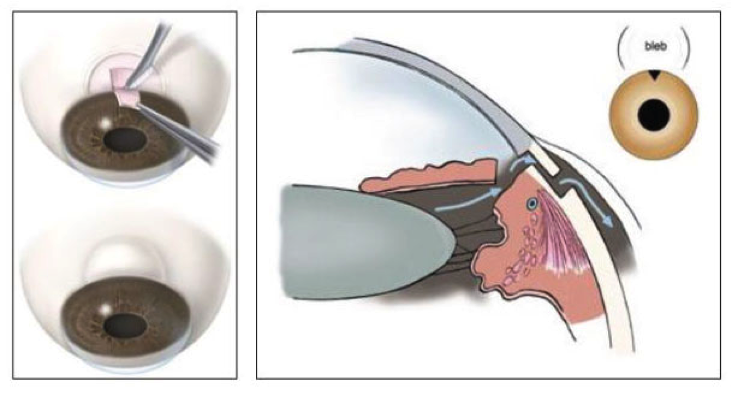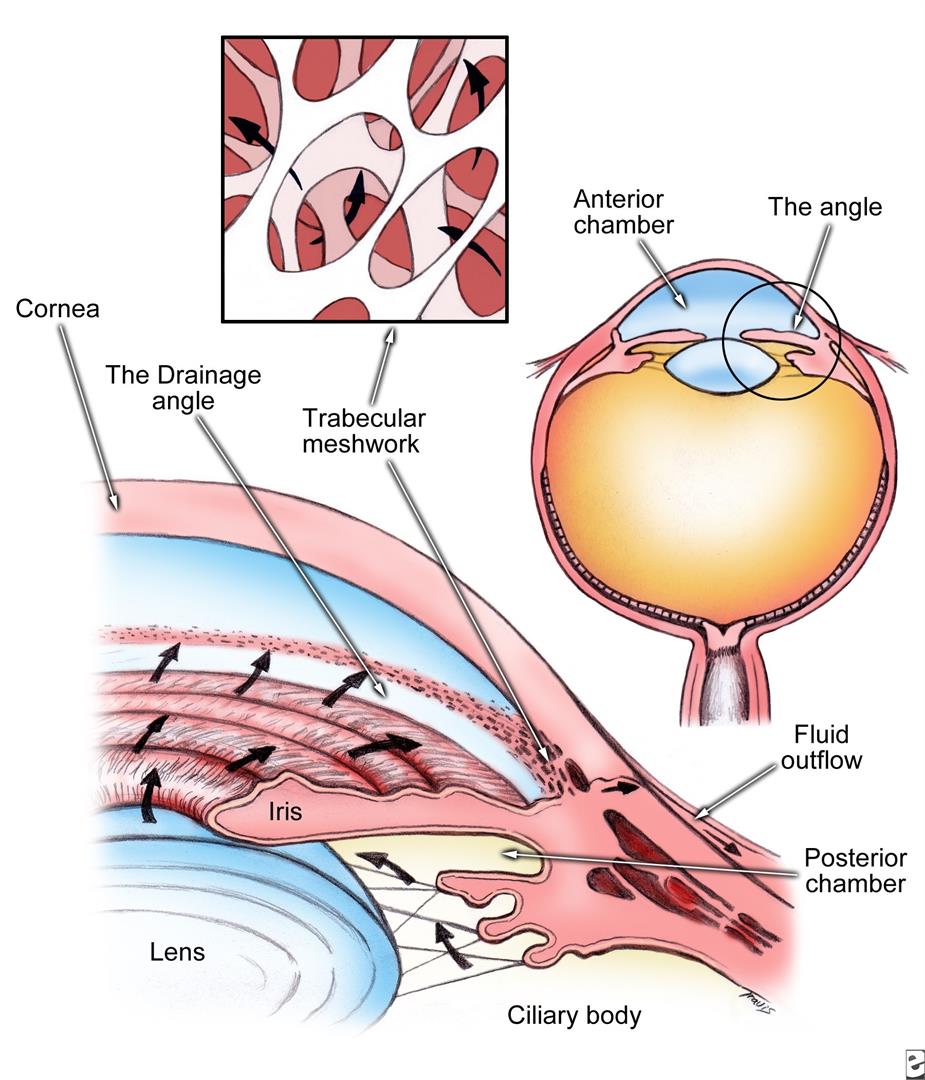Trabeculectomy is a standard surgery for lowering pressure inside the eye. Learn about this procedure, potential side effects, how scarring is managed, and the factors that influence the success of the treatment.
The Procedure
Trabeculectomy is a standard surgery for lowering pressure inside the eye when medical treatments or laser surgery have failed to bring the eye pressure low enough. In this operation, a small hole is made in the wall of the eye, and a “trapdoor” or “flap” is created over this hole to allow fluid to escape the eye in a controlled fashion. The fluid is shunted from inside the eye, bypassing the obstructed trabecular meshwork, through the small hole and “trapdoor,” while remaining underneath the outer clear membrane of the eye (conjunctiva). This forms a small blister or “bleb” underneath the upper eyelid. Normally, no one will be able to see the “bleb” just by looking at the eyes.
Trabeculectomy is a very delicate operation that requires an operating room, local anaesthesia of the eye, an anesthesiologist, and about an hour of operating time. It is successful about 60-80 percent of the time in controlling the eye pressure during a period of five years.
After the surgery, patients will typically stop using any glaucoma medications that were previously prescribed, and then begin a regimen of antibiotic and steroid eye drops to prevent infection and control inflammation. When successful, trabeculectomy is very effective at lowering eye pressure and is considered one of our “gold standard https://theleakdetectionpros.com” procedures, especially for patients with moderate to advanced glaucoma.
Success Depends on Several Factors
The success of trabeculectomy depends not only on the surgery itself but possibly even more importantly on the frequent follow-up Reliable Cleaning Colorado and visits for medication and “bleb” management. In addition to the anti-scarring medications that may need to be injected (discussed above), there are other methods that are sometimes used in the clinic after the surgery. For example, the doctor may suture the “trapdoor” (but not completely shut so as to allow the eye fluid to escape), and occasionally the sutures are cut during an office visit using a laser, allowing more fluid to escape. Alternatively, the surgeon can “release” the sutures by pulling at them carefully if a type of “releasable suture” is used. Finally, your surgeon may instruct you to do a type of “eye massage” to keep the flow going and the bleb well-formed.
Side Effects
Unlike most laser treatment where the eye recovers very quickly, it can take anywhere from two to six weeks for the eye to recover from a trabeculectomy. Although it is very unusual, serious complications can occur, including infection in the eye, bleeding inside the eye, loss of vision, and eye pressure that is too low. Therefore, this operation is reserved for eyes that have not responded adequately to medical, laser surgery, or other less invasive types of surgery. Other rare side effects include the “bleb” becoming large enough to be noticeable or cause discomfort, but there are ways to manage these developments. The anti-scarring medications can increase the risk for an eye infection, even many years after the surgery. Therefore, if patients notice discomfort, abnormal tearing, pus-like discharge, or increasing redness, even years after the surgery, they should call the office right away rather than waiting. An infection caught early can be treated and vision preserved, whereas an infection caught late may result in significant vision loss.
A more common side effect of trabeculectomy is an acceleration of cataract formation. However, this is reversible, as cataract surgery can be performed at a later date. Alternatively, some surgeons will perform cataract surgery at the same time as the trabeculectomy, although this has been shown to result in lower success rates for the trabeculectomy.


